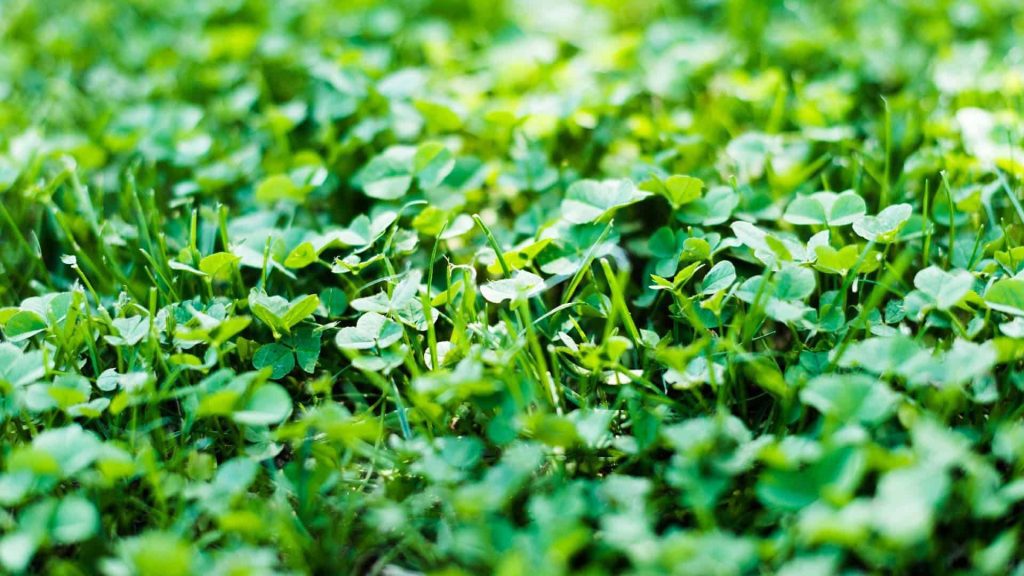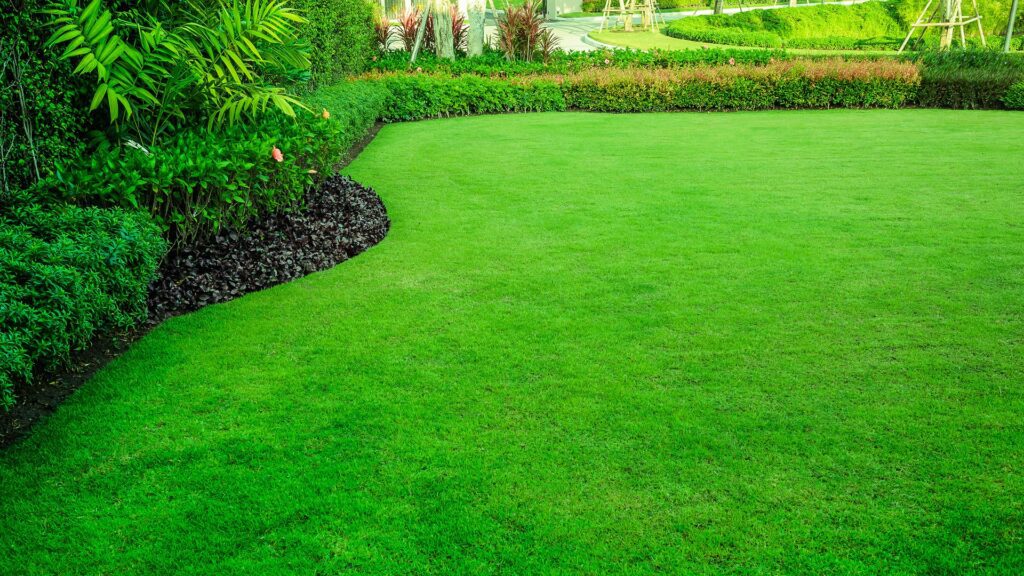
How Composting and Top Dressing Can Revitalize Your Lawn
No matter which camp you fall into, whether you’re diligent with lawn care or only mow it when it needs a trim, you’ll benefit from top dressing it from time to time.
Rather than buying expensive lawn care products, using compost to do the job can save money and the planet.
Can you add compost to your lawn? The act of adding compost to the top of your grass is called top dressing and it is possible to do, with the right type of compost.
The benefit of top dressing your lawn is that it grows thicker and healthier without having to resort to chemicals and lawn care products.
If you have a compost heap and are looking to put it to good use, top dressing could be the solution.
This guide will answer all of your questions on making compost for lawn care and how to make sure you’re doing it right.
What is Compost?

Composting is a recycling process that occurs as food and natural waste are broken down and turned into a fertilizer-type product.
Many people have a composting bin at home where they place food and vegetable scraps, as well as other natural materials, inside and let it sit for weeks and months to process.
The composting progression occurs thanks to the natural process of decomposition which eventually happens to anything that grows.
When done in the right setting, like a dedicated compost bin, it’s sped up, and the bacteria, fungi, and other organisms help to break down the materials even faster.
This process varies in time depending on a few factors including the waste content, size of the compost bin, and whether the ratio of 30 parts nitrogen to one part carbon is achieved.
After some time, usually four weeks to a few months, the waste breaks down and turns into a nutrient-rich product that resembles garden soil which can then be spread onto your lawn and plants.
How Do You Make Compost?

Making compost is one of the best things that the average household can do as it’s a natural way to recycle the food waste and scraps that would otherwise end up in a landfill.
It’s also incredibly easy to do so there’s no reason not to start your own compost heap and reap the benefits for yourself.
To start a compost heap or bin, you need to know what is and isn’t allowed to be composted.
Items like fruit and vegetable scraps, shredded newspaper, cardboard, branches, coffee grounds are all okay.
You should avoid putting any animal byproducts, fats and oils, dairy, and clippings or twigs that have pesticide and herbicide on them.
Although there’s no need to use a compost bin, it can speed up the process, otherwise, you can simply start a compost pile somewhere in your backyard.
The basic rule of thumb is that a compost pile needs green matter, brown matter, and some water to effectively turn into the black gold fertilizer we want.
Once the pile has started it takes some months for it to turn into its final form, so patience is required.
What is Top Dressing?
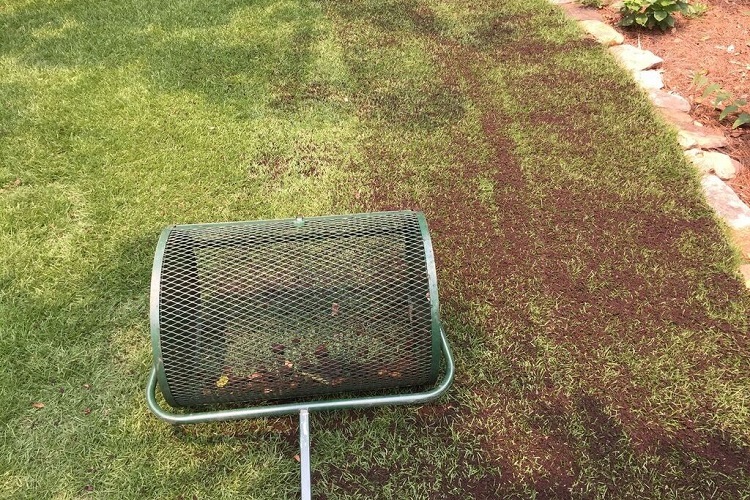
Top dressing is a common term used in the gardening world, meaning to spread a layer of something over the top of something else.
Usually, you would top dress your lawn or top dress a garden bed, using a product like manure, compost, or fertilizer, spreading a thin layer of it over the top to cover it.
The purpose of top dressing is to deliver a boost of nutrients to the soil below but in an easier fashion than having to mix it through the soil.
When done correctly, the top dressing product will reach the soil beneath and improve the health of the plants and grass that grow from it.
The Benefits of Top Dressing Your Lawn With Compost

One of the great things about top dressing your lawn is that it works on all kinds of lawns and for all types of gardeners.
Even those who only mow their lawn every few weeks or when it’s gotten out of control can benefit from top dressing with compost, so check out these benefits it offers:
- Easy to apply: The texture of compost means it’s easy to spread across the lawn and can be finely screened when applied. There’ll be no big chunks that have to be broken down as it should all spread in easily.
- pH balanced: A good compost, either homemade or store bought, has the right pH levels for grass. You’ll want something either neutral or close enough to neutral for it to be effective, which compost does.
- Contains microbes: There are loads of microbes within compost that are fed directly to the soil and grass. This means you’re giving a huge boost of nutrients to your backyard whenever you top dress with compost.
- Breaks down thatch: Lawns with lots of thatch will find that compost helps to break this down easier as well. The dead grass layer can become easier to manage once it’s been dressed with some compost, which results in less work for you.
- Breaks down grass clippings: Microbes also assist in breaking down grass clippings that are ejected when you mow. As they break them down, they transform the grass into nitrogen which is one of the best ingredients for grass growth and health.
- Slow releasing: The slow release nature of compost means you’ll see benefits for months to come, and because it features micro and macronutrients, the balance of the composition is ideal.
- Cost effective: Using compost is either free or cheap, making it a lot more affordable and easier to access when compared to other forms of fertilizer. You can regularly dress your lawn with compost without it costing a thing.
- Aerates your lawn: When the compost travels down to the soil, the organisms within the soil get to work digesting it which opens up small spores within it. Using a regular application of compost on your lawn removes the need to ever aerate it manually again.
How to Top Dress Your Lawn
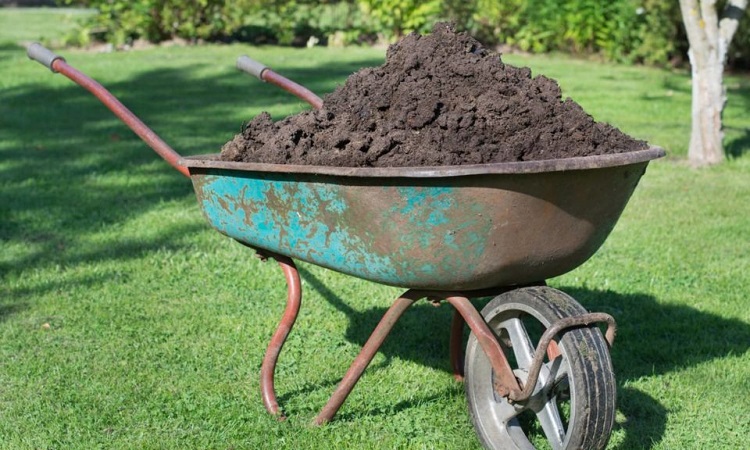
The good news is, top dressing your lawn is a simple job, but one that yields amazing results. If you’re ready to give it a go, have a look at the steps involved before you jump in and start planning.
- Assess the lawn first and if it has more than half an inch of thatch, use a dethatcher to remove it. Otherwise, use a core aerator first if you don’t want to dethatch.
- Mow the lawn and prepare it for the compost. Do this on a gentle setting and as low as you can without stressing the grass. Get rid of any debris created from mowing.
- Lawns with heavy clay or poor soil quality should be aerated before composting but if you’ve already done this instead of dethatching, it doesn’t need to be done again.
- Fill a wheelbarrow with compost and then spread it over the lawn. You want a layer of between ¼ inch to ½ inch for it to be effective. If you’ve aerated, fill in the holes with some compost as well.
- Use a rake turned over and brush the grass gently once the compost has been applied. You want the compost to be touching the soil but without being pushed down too much.
- If you plan on reseeding, do it now. Otherwise, applying to compost on top of seeds will cause them to be compacted.
- Be sure to set up an irrigation system that keeps the soil moist to facilitate growth and let the compost get to work. The top dressing process will be more effective is the ground is watered immediately after.
The Best Type of Compost For the Job
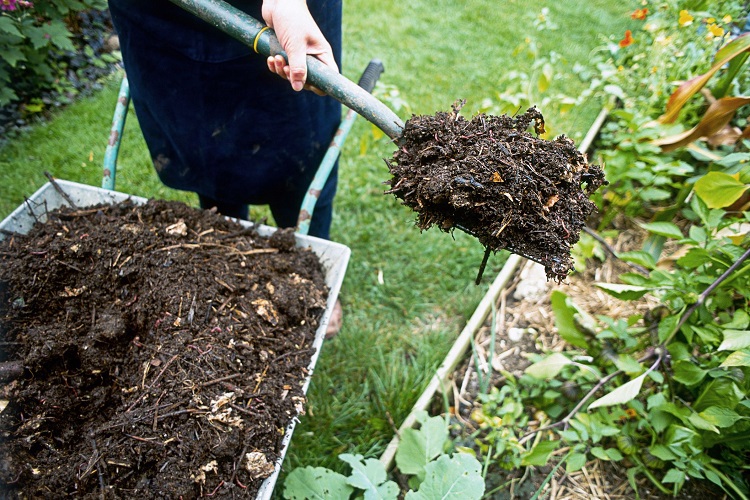
Choosing the right compost is also important for the health of your lawn, with the materials and the composting process both affecting how worthy it is.
The easiest way to do this is by using compost that you’ve made yourself so that you know exactly what’s in it and effectively it’s been broken down for.
However, if you’re not able to make your own or don’t have enough to cover the volume of grass needed, you can purchase some ready-made.
If taking this approach, ensure that it contains no dyes or building materials, any weeds or pesticide residues, and has a USCC Seal of Testing Assurance that validates its quality.
These tested composts come in bulk amounts and most are readily available through garden centers and supply yards.
All you need to do is calculate the size of your yard to see how much compost is required. If it’s more than what comes in pre-bagged compost, bulk purchases are possible from local gardening stores.
Potential Downsides to Composting Your Lawn
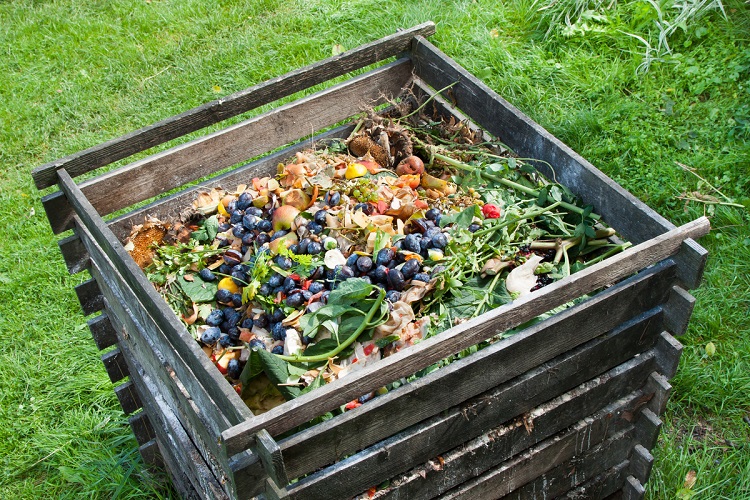
Nobody ever said gardening was easy, and when it comes to top dressing your lawn with compost, there are some hiccups that can occur.
These are the potential downsides to be aware of, and avoid, when taking this approach.
- Damage from the wrong compost: Using a compost that features harmful ingredients or creating your own compost with prohibited materials is never recommended. If you aren’t careful, top dressing with compost can hurt your law permanently and it can be hard to reverse the damage done to the soil underneath.
- Compacts and restricts soil: Top dressing with the wrong materials or type of compost can have the opposite effect on your lawn. Sometimes, the soil can become compacted and restricted from water and air which will harm the grass.
- Doing it at the wrong time: Top dressing done in the wrong weather can have the opposite effect, so avoid applying the compost if it’s going to rain or doing the job during winter. Timing is everything when it comes to this job.
Convenient Compost For a Healthy Lawn
There’s no better natural product to add to your lawn than compost, helping to retain moisture in the soil and put important nutrients back into it.
With a little bit of know-how and some time spent composting, you’ll have a natural and effective way to get your lawn to flourish.
Related Questions
Composting your lawn might not be the first thing you think of doing with this nutrient-rich substance but it offers loads of benefits that make it worthwhile.
Before you jump onto the composting train though, check out these commonly asked questions that can give you a better understanding of how it all works.
What Can’t You Put in a Compost Bin?
Compost bins are mainly for fruit and vegetable scraps, so food items like meat and fish products, dairy and oils, and plants infected with disease and insects should not find their way into them.
If you’re unsure about what you’re putting into the compost, it’s best to leave it out.
How Long Does It Take to Make Compost?
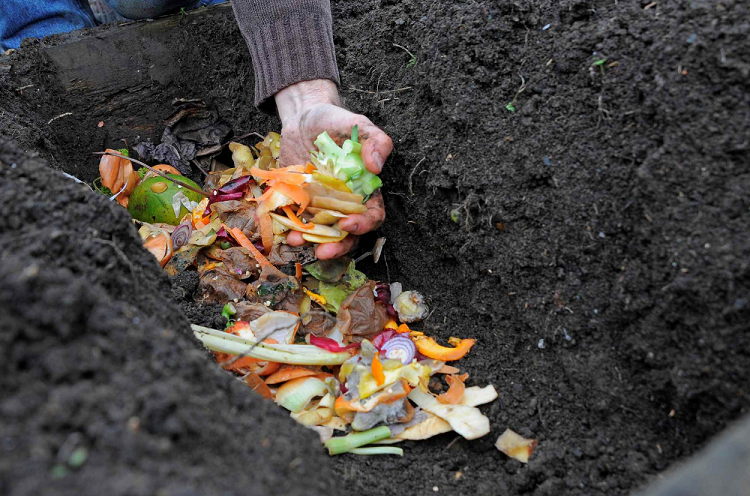
The process of composting can take varying lengths of time depending on things like what waste is being composted and how effective its environment is.
You can expect to wait between four weeks and up to six months for compost to reach its final form, but it should be assessed regularly to see how it’s going.
Can You Buy Compost?
It is possible to buy bulk amounts of compost through a garden supply store if you aren’t able to make your own or have a large space to cover.
However, not all composts are created equally and you’ll need one with the right nutrients, pH levels, and quality to suit your garden.
Resources:
